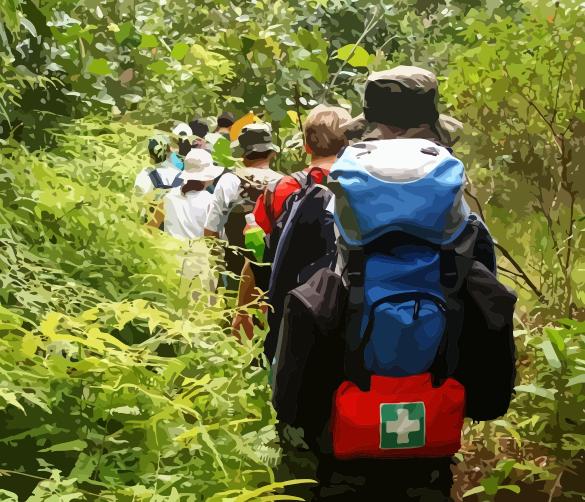Hiking First Aid Kit: Plan Ahead Before You're Hours Away from Help

Let's face it, when going hiking a first aid kit will be the last thing on your mind. But you'll be in a situation where help can be hours away, so it should be one of your first considerations. The suggestions below should easily fit in a small bag that can easily go in your back pack.
- Non-latex gloves (several pairs): to reduce the chance of touching bodily fluids. It is important for the gloves to be non-latex because about 10% of the population is allergic to latex.
- Face shields for rescue breathing: to reduce the chance of disease transmission. There are some very small and compact models available.
- If anyone has any medical conditions (asthma, allergies, heart, etc), it is vital that they have enough medicine to last until they can reach help.
- Triangular bandages, about 4-6: used to tie dressing, to create slings, or to tie splints together. These should never be used to apply tourniquets.
- Sterile dressings of various sizes: used to control bleeding, or to cover a wound to keep it clean.
- Safety pins: used to pin dressing in place.
- Adhesive tape: to tape things together.
- Scissors: for cutting clothing to treat minor injuries.
- Blanket: to treat for shock. There are some very compact options available. These are called emergency blankets or space blankets.
When hiking, you should also:
- Know your route before you start out.
- Have a reliable map.
- Not rely only on GPS gadgets, batteries run out.
- Always tell someone where you are going, the route you are taking, and when you are expected back.
- Check the weather before you leave.
- Make sure you have plenty of water, especially in hot environments.
Download the FREE First Aid and CPR Manual today!




Leave a Reply